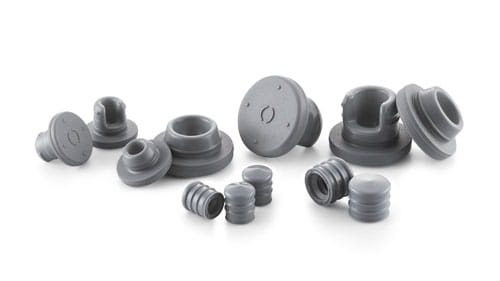Elastomer Fundamentals
Demands on parenteral drug packaging/delivery elastomer components are increasing with regard to particulate reduction, extractables and leachables, and functional performance. All of these attributes are directly related to the elastomer formulation and its fundamental characteristics. To select the right component for a drug product, these attributes must be understood and controlled.
![]()

An elastomer (i.e., rubber), is an amorphous polymer with viscoelastic properties existing above its glass transition temperature. The cross-links between polymer chains help to determine physical properties such as hardness, tensile modulus/strength, elongation and compression set; properties that play a major role in how elastomer components perform. The viscoelastic properties allow for the elastomer component to contact and flow over the surface of a container surface and apply continuous pressure to make an integral seal – which is the basis of their utility in drug packaging/delivery.
The elastomer formulation determines critical properties, such as: (a) hardness (i.e., durometer value), which affects coring resistance, break-loose force (of plungers) and container closure integrity; (b) extractables and leachables profile; and (c) permeability of oxygen and water. When identifying the elastomer component that is right for a drug product, it is important to understand and control the fit and function, as well as the physical and chemical properties that affect machinability and compatibility throughout the lifetime of the drug.
To support this, West supplies Formulation Characteristics for its elastomer formulations – information on chemical and physical properties of elastomer formulations to assist customers in selecting the right component. These can be found on the West Knowledge Center or contact a Technical Customer Support representative.



